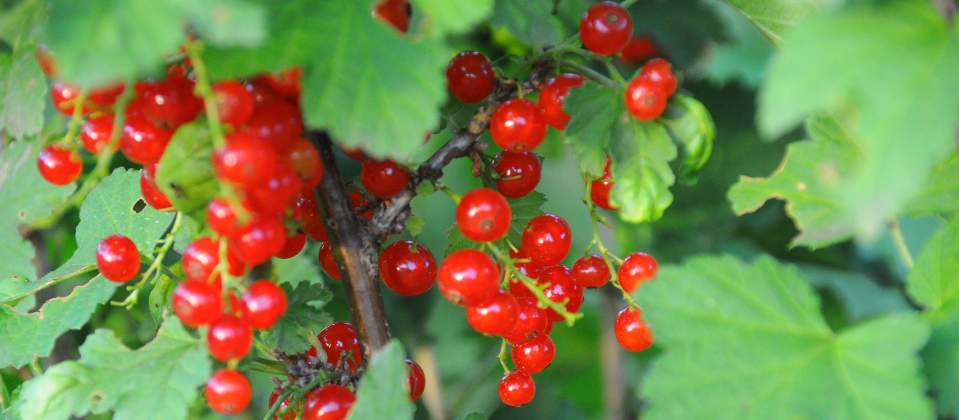Gorgeous jewels of deliciousness are coming ripe and ready now – red and black and white currants, raspberries, blueberries, dessert and culinary gooseberries, strawberries, hybrid josta and Worcester berries – but if you want to enjoy your soft fruit you’ll need to deprive the birds of that delight. Red fruits are more attractive to birds, but that doesn’t mean your blackcurrants, blueberries and gooseberries are safe at all (though the yellow raspberries do seem to be fairly immune); gooseberries tend to ripen first of the soft fruits and are a real favourite of the pigeons – and they’ve got big bellies! Netting fruit is a tedious job, but a very necessary one, and a real art. You need to make sure it’s weighted down at ground level, that you sew up any holes (nets can be used for decades if you look after them – just as well as the majority are still plastic based), and that there are no gaps where you overlap net on net. Try to have the nets like a cage around your bushes; if the net is just draped over them, birds will happily perch on top and have a feast through the holes. And while keeping the birds out is the main aim, you need to be careful that a bird can’t get in and get stuck and tangled in the net; however vindictive you may feel about pigeons, it’s very distressing for them, and for you, to have a struggle and possible death on your plot.
Netting cherries is a harder job as the mature trees are quite large; a good tip is to use net bags that your seed potatoes might have come in, or onions and carrots bought in bulk; you can slip these onto a branch like a sleeve and tie it on. Blackbirds adore cherries: if you don’t net them, you won’t get them.
Soft fruit are a really worthwhile part of your plot patchwork of crops. There’s no need to water them unless in a very dry year; if you have weeded and mulched effectively around them earlier in the year, there should be plenty of moisture deep down where the roots can find it, especially after the very wet start to the year we have had. Currants and berries are expensive to buy in shops and inevitably not as fresh as those you grow yourself and pick regularly and frequently. When fruit ages, even a matter of a day, it loses its valuable vitamin C and the antioxidant polyphenol constituents diminish. You can easily pick and freeze your produce to give winter meals a bright nourishing glow. Simply put them into bags of an appropriate size for your eating habits, and stack them on the freezer shelves. There’s no need at all to lay them on trays so each is separate; when they thaw they will be soft and juicy and run together anyway, so save yourself some time at this busy period of the year – use it to crop your beans and thin your carrots (if you’re lucky enough to have had any germinate this terrible year!) and pick off slugs.
Once you have picked all the fruit, take the nets off promptly so the bushes don’t grow through the nets. Although some folk like to prune blackcurrants at this time of year, by cutting out a quarter or so of the older wood with fruit on it, which makes for easy picking, the main time to prune soft fruits is after their leaves have fallen in late autumn, early winter. Make sure you know the different pruning requirements of the different fruits; there’s an earlier Plotlines on this subject.
Enjoy the fruit feast and boost your health while they last…….


